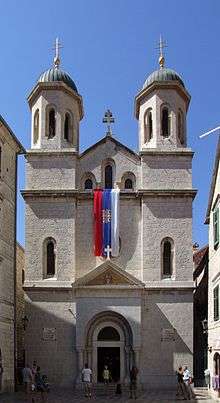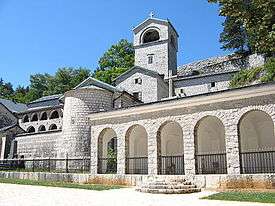Serbs of Montenegro
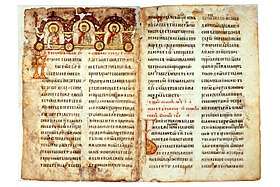 Miroslav Gospel, one of the oldest surviving documents written in Serbian recension of Church Slavonic, was created by order by Miroslav of Hum | |
| Total population | |
|---|---|
|
Serbs: 178,110 (2011)[1] Serbs-Montenegrins: 2,103 (2011) Montenegrins-Serbs: 1,833 (2011) | |
| Languages | |
| Serbian | |
| Religion | |
| Serbian Orthodox Church | |
| Related ethnic groups | |
| Montenegrins |
| Part of a series of articles on |
| Serbs |
|---|
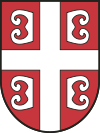 |
|
Native communities |
|
Related groups |
Serbs of Montenegro (Serbian: Срби у Црној Гори / Srbi u Crnoj Gori) or Montenegrin Serbs (Serbian: Црногорcки Cрби / Crnogorski Srbi) [a], compose the second largest ethnic group in Montenegro (28.7% of country's population[2]), after the Montenegrins. In historiography, the Eastern Orthodox Christians of Montenegro were called Serbs. In the constitutions of the Principality of Montenegro and Kingdom of Montenegro, the Montenegrin people's ethnonym was Serbs. With the formation of Socialist Yugoslavia, the censuses showed a majority of people declaring as Montenegrins.
History
Following the Slavic settlement of the Balkans in the 6th and 7th centuries, several principalities were established in the Western Balkans towards the Adriatic. Duklja, first mentioned in the De Administrando Imperio (c. 960), was one of the Serbian principalities that came under Byzantine rule in 1018 after Basil II's conquest of Bulgaria. The Serbs were the Empire's "most important but insubodinate subjects in the western Balkans". Duklja broke away from Byzantine rule in 1042 under ruler Stefan Vojislav and became the leading Serbian state until the 12th century. All of what is today Montenegro came under the rule of Grand Prince Stefan Nemanja, the founder of the Nemanjić dynasty, after 1180. Zeta, formerly known as Duklja, became a less important region in the Serbian state.[3] Nevertheless, it remained a crown land, given to the heir of the monarch. Several monasteries date to this period, such as: Praskvica, Banja, Morača, Vranjina, and others.
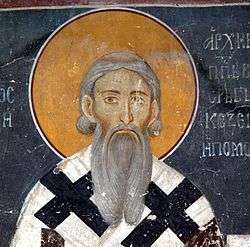
Montenegro saw independence under the Petrović-Njegoš dynasty, firstly as a principality and then as a kingdom. Both Kingdoms fought together as independent states in the Balkan Wars and in the First World War. At the end of the war in 1918 tensions arose between the two states as the Montenegrin Whites with Serbian support deposed Nicholas I of Montenegro and proclaimed Montenegro's unification with Serbia as part of Kingdom of Serbs, Croats and Slovenes (renamed into Kingdom of Yugoslavia in 1929), while the Montenegrin Greens opposed it. The conflict led to the Christmas Uprising, in which the Whites with support from the Serbian army defeated the Greens.[4] During the period of the monarchic Yugoslavia, ruled by the Serbian Karađorđević dynasty, the tensions between Serbs and Croats were increasing and most of the Montenegrin politicians supported the Serbian proposed centralised state.

During the Second World War both Serbs and Montenegrins were very active in both resistance movements, the Yugoslav Partisans and the Yugoslav Army in the Fatherland known as the Chetniks. At the end of the war the socialist Yugoslavia was created and the two became republics within the Yugoslav federation.
Yugoslav Partisan Milovan Djilas described himself as a Montenegrin Serb and described Montenegro as the spiritual homeland of Serbs, saying "I am not a Montenegrin because I am a Serb, but a Serb because I am a Montenegrin. We Montenegrins are the salt of the Serbs. All the strength of the Serbs is not here [in Montenegro] but their soul is."[5] Djilas also has said "The Montenegrins are, despite provincial and historical differences, quintessentially Serbs, and Montenegro the cradle of Serbian myths and of aspirations for the unification of Serbs.".[5]
After the secession of Slovenia, Croatia, Bosnia and Herzegovina and Macedonia in 1991 and 1992, SR Montenegro held the Montenegrin referendum in 1992 which ended with a 95.96% of votes in favour for a state union with Serbia and with the changing of the socialist political system towards a multi-party one. The country was renamed Federal Republic of Yugoslavia. In this period between 1990 and 1998 Montenegro was ruled by Momir Bulatović who had close relations with the Serbian president Slobodan Milošević and who was very supportive to keep close ties between the two republics within the state union. Montenegro was also included by the economic sanctions imposed to Serbia during the 1990s. During the 1999 NATO bombing of Yugoslavia both Serbia and Montenegro suffered the attacks of the NATO forces and several targets inside Montenegro were also bombarded. All this contributed to the rise in power in Montenegro of Milo Đukanović who was known to be much less sympathetic towards the Serbo-Montenegrin ties and would become an open supporter of the independence of Montenegro. In 2006, six years after the fall of Milošević in 2000, and after insisting on international diplomacy, the former Yugoslavia became known as the state union of Serbia and Montenegro. The process of becoming a single state union ironically lead to the separation of the two states - a change which was officiated by the referendum on Montenegrin independence on 21 May 2006. A total of 419,240 votes were cast, representing 86.5% of the total electorate. Of them, 230,661 votes or 55.5% were in favour of independence and 185,002 votes or 44.5% were against.[6]
Since independence, the Montenegrin society has been divided among many issues. The independence supporters are advocating for the creation of a separate Montenegrin language, regarded before as a dialect of the Serbian language, including the creation of a new Montenegrin Cyrillic alphabet which is basically the Serbian Cyrillic alphabet with the addition of two new letters. The Serbian population of Montenegro is opposed to the idea of a linguistic separation, just as they are opposed to the separation of the Montenegrin Orthodox Church from the jurisdiction of the Serbian Orthodox Church. The Montenegrin language lacks ISO code, and the Montenegrin Orthodox church is canonically unrecognized.
The links between the two nations remains strong, and the fact that for the last two centuries a great number of Montenegrins had emigrated to Serbia further strengthens the ties. The Montenegrin littoral is still the main turistic destination for citizens of Serbia, and a large population of Serbians own property in Montenegro. Many of these properties consist of summer homes, and contribute to a seasonal influx of Serbs in Montenegro, during the summers. Despite the geopolitical separation, the economic balance and relationship shared between the two countries continues to be strong.
Culture
Language
The national language of Montenegro has historically and traditionally been called Serbian.[7] According to Pavle Ivić, two sub-dialects of the Shtokavian dialect (of the Serbian language) were spoken in Montenegro: the Eastern Herzegovinian dialect and Zeta-South Sanjak dialect. The Eastern Herzegovinian dialect is spoken in Montenegro, Serbia, Bosnia and Herzegovina and Croatia. Today, the national standard is based on the Zeta-South Sanjak dialect.
Some 42.9% of the population of the country speak Serbian as their mother tongue, including 37% of the declared Montenegrins. Serbian was the official language of Montenegro until 2007 when the new Constitution of Montenegro replaced the Constitution of 1992. Amid opposition from pro-Serbian parties,[8] Montenegrin language was made the sole official language of the country and Serbian was given the status of a recognised minority language along with Bosnian, Albanian, and Croatian.[9]
Since 2006, both in linguistic and other aspects of cultural life, ethnic Serbs of Montenegro have been exposed to gradual "non-coercive" Montenegrinisation.[10]
Religion
The Serbs are adherents of the Serbian Orthodox Church, the strongest religious institution of Montenegro (with a total of 460,383 followers or 74%).[11] One of the largest places of worship is the Cathedral of the Resurrection of Christ in Podgorica.
The future of the Serbian Orthodox Church in Montenegro has been threatened by the newly formed Montenegrin Orthodox Church which has claimed Serbian Orthodox churches in Montenegro, and is backed by a small percentage of the Orthodox Christians in Montenegro. The government has recognized the church, however none of the Eastern Orthodox churches have. The leader is the controversial Miraš Dedeić, a former Serbian Orthodox clergyman with Serbian nationalist views that after being suspended from the Serbian Church, went to Rome and became a Greek Orthodox clergyman.
He was later suspended by the Serbian Orthodox Church after committing adultery with a younger woman. In 1997 he was excommunicated by the Holy Synod of the Ecumenical Orthodox Patriarchate of Constantinople from the Eastern Orthodox Church. Montengrin Orthodox Church's leader is anathemized by the Ecumenical Patriarchate of Constantinople and banished from Orthodoxy.
Folk attire

The Montenegrin cap is a traditional hat for ethnic Serbs in Montenegro and in later times the self identifying Montenegrins, originally in the shape of a flat cylinder, having a red upper surface (called tepeluk) not dissimilar to the Herzegovina and Lika caps. It was wholly red until Prince-Bishop Petar II Petrović Njegoš surrounded it with a black rim (called derevija),[12] and the definition given was as a sign of grief of occupied Kosovo. The Kosovo Myth was very popular in the Prince-Bishopric of Montenegro. The enforcement of the cap upon the Montenegrin chieftains by Peter II was a mark of expression of then's dominating Serbian national identity.[13] The national telling recorded the most often version of the cap as following: the black wrapper was sign of grief for the once big Empire, the red the bloody defeat at the Battle of Kosovo[14] and the five small stripes on the top represent the remaining remains of the once greater Serbian realm,[15] which became increasingly popular amongst the common folk during the reign of Prince Danilo I Petrović-Njegoš. Within the stripes is angled a six star, representing the last free part, Montenegro, shining upon the fallen and conquered.[16] Worn by the rulers and chieftains, the version with the Four Ocil symbol in the star's place had become across the years with growth of nationalism excessively popular amongst the ordinary people, the symbol of the Serbian Orthodox Church, which effectively worked on maintaining and raising the national identity.
Politics
- Active political parties
- New Serb Democracy (NSD, est. 2009)
- Serb List (SL, est. 2012)
- Democratic Serb Party (DSS, est. 2003)
- Democratic People's Party (DNP, est. 2015)
- Party of Serb Radicals (SSR, est. 1993)
- Defunct political parties
- Serb People's Party (SNS, 1998–2008), merged into NSD
- Serb List (2006–09), political alliance
- People's Socialist Party of Montenegro (2001–09)
Demographics
According to the 2011 census, Serbs are second largest ethnic group and constitute 28.7% of population of Montenegro. They are absolute majority in three and relative majority in another three municipalities, and constitute less than 20% of population in only four out of total 21 municipalities in the country. Percentage of Serbs in municipalities of Montenegro is as follows:
- Plužine (65.6%)
- Andrijevica (61.8%)
- Pljevlja (57%)
- Herceg Novi (48.9%) (relative majority)
- Berane (42.9%) (relative majority)
- Šavnik (42.4%)
- Žabljak (41.3%)
- Budva (37.7%)
- Bijelo Polje (35.9%) (relative majority)
- Kolašin (35.7%)
- Mojkovac (35.4%)
- Tivat (31.6%)
- Kotor (30.5%)
- Danilovgrad (27%)
- Bar (25.3%)
- Nikšić (25.3%)
- Podgorica (23.2%)
- Plav (16%)
- Ulcinj (5.7%)
- Cetinje (4.3%)
- Rožaje (3.6%)
Notable people
 |  |  |  | .jpg) |
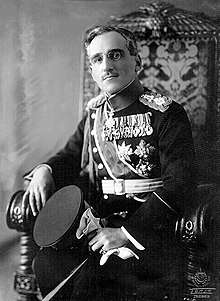 |  |  |  | 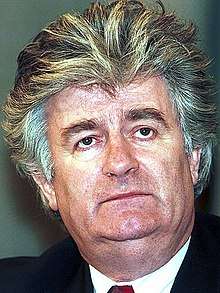 |
 | 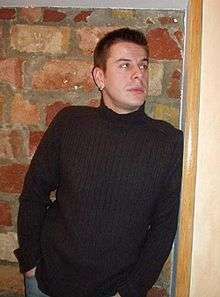 |
See also
| Wikimedia Commons has media related to Serbs of Montenegro. |
Notes
- ^ The correct political terms are Serbian: Црногорcки Cрби – Crnogorski Srbi, meaning "Montenegrin Serbs", and Cрби Црногорци - Srbi Crnogorci, meaning "Serbs Montenegrins". Specifically, Their regional autonym is simply Crnogorci (Црногорци) – , literal meaning Montenegrins,[17][18] the same as the ethnic group of Montenegrins). In the early modern times, before the Kingdom of Montenegro, people [living within present-day borders] were divided by the identities of Brđani (Brda), Hercegovci (Old Herzegovina), Bokelji (Boka Kotorska) and Crnogorci (Old Montenegro). Срби у Црној Гори - Srbi u Crnoj Gori, meaning "Serbs in Montenegro".
References
- ↑ http://monstat.org/userfiles/file/popis2011/saopstenje/saopstenje(1).pdf
- ↑ "Official results of the 2011 Montenegrin census" (PDF).
- ↑ David Luscombe; Jonathan Riley-Smith (14 October 2004). The New Cambridge Medieval History: Volume 4, C.1024-c.1198. Cambridge University Press. pp. 266–270. ISBN 978-0-521-41411-1.
- ↑ Banač, Ivo (March 1988). The national question in Yugoslavia: origins, history, politics. Cornell University Press. p. 285. ISBN 978-0-8014-9493-2. Retrieved 11 December 2011.
- 1 2 Elizabeth Roberts. Realm of the Black Mountain: A History of Montenegro. London, England, UK: Cornell University Press, 2007. Pp. 1.
- ↑ "Montenegro vote result confirmed". BBC News. 23 May 2006. Retrieved 5 November 2011.
- ↑ cf. Roland Sussex, Paul Cubberly, The Slavic Languages, Cambridge University Press, Cambridge 2006; esp. v. pp. 73: "Serbia had used Serbian as an official language since 1814, and Montenegro even earlier.".
- ↑ "''Pro-Serbian parties oppose Montenegro constitution''". Setimes.com. 26 October 2007. Retrieved 5 November 2011.
- ↑ "Ustav Crne Gore". Snp.co.me. Retrieved 5 November 2011.
- ↑ Financial Times (2007): Neil MacDonald, Montenegro’s ethnicity debate intensifies
- ↑ see: Religion in Montenegro
- ↑ "Crna Gora i Crnogorci" by Vuk Stefanović Karadžić
- ↑ "O najstarijoj kapi kod Jugoslovena..." by Miodrag Vlahović
- ↑ Crna Gora... Narodni život i običaji" by Andrija Jovićević
- ↑ "Crnogorska muška kapa" by Zorica Radulović
- ↑ "Fizicki lik i izgled Njegosa" by Jovan Vukmanović
- ↑ Charles Seignobos, Political History of Europe, since 1814, ed. S. M. Macvane, H. Holt and Company, New York, 1900, pp. 663–664; excerpt from chapter XXI The Christian Nations of The Balkans, subchapter Servia and Montenegro, passages Montenegro
- ↑ "Projekat Rastko Cetinje – Slavenko Terzic – Ideoloski korijeni crnogorske nacije i crnogorskog separatizma". Rastko.rs. Retrieved 5 November 2011.
Sources
- Primary sources
- Moravcsik, Gyula, ed. (1967) [1949]. Constantine Porphyrogenitus: De Administrando Imperio (2nd revised ed.). Washington D.C.: Dumbarton Oaks Center for Byzantine Studies.
- Pertz, Georg Heinrich, ed. (1845). Einhardi Annales. Hanover.
- Scholz, Bernhard Walter, ed. (1970). Carolingian Chronicles: Royal Frankish Annals and Nithard's Histories. University of Michigan Press.
- Thurn, Hans, ed. (1973). Ioannis Scylitzae Synopsis historiarum. Berlin-New York: De Gruyter.
- Шишић, Фердо, ed. (1928). Летопис Попа Дукљанина (Chronicle of the Priest of Duklja). Београд-Загреб: Српска краљевска академија.
- Кунчер, Драгана (2009). Gesta Regum Sclavorum. 1. Београд-Никшић: Историјски институт, Манастир Острог.
- Живковић, Тибор (2009). Gesta Regum Sclavorum. 2. Београд-Никшић: Историјски институт, Манастир Острог.
- Anna Comnena, The Alexiad, translated by Elizabeth A. Dawes in 1928
- John Kinnamos, The Deeds of John and Manuel Comnenus, trans. C.M. Brand (New York, 1976). ISBN 0-231-04080-6
- Secondary sources
- Bataković, Dušan T., ed. (2005). Histoire du peuple serbe [History of the Serbian People] (in French). Lausanne: L’Age d’Homme.
- Ćirković, Sima (2004). The Serbs. Malden: Blackwell Publishing.
- Curta, Florin (2006). Southeastern Europe in the Middle Ages, 500–1250. Cambridge: Cambridge University Press.
- Džomić, Velibor V. (2006). Pravoslavlje u Crnoj Gori [Orthodoxy in Montenegro]. Svetigora.
- Fine, John Van Antwerp Jr. (1991) [1983]. The Early Medieval Balkans: A Critical Survey from the Sixth to the Late Twelfth Century. Ann Arbor, Michigan: University of Michigan Press.
- Jovanović, Batrić (1989a). Peta kolona antisrpske koalicije : odgovori autorima Etnogenezofobije i drugih pamfleta.
- Jovanović, Batrić (1989b). Crnogorci o sebi: (od vladike Danila do 1941). Sloboda.
- Jovanović, Batrić (2003). Rasrbljivanje Crnogoraca: Staljinov i Titov zločin. Srpska školska knj.
- Obolensky, Dimitri (1974) [1971]. The Byzantine Commonwealth: Eastern Europe, 500-1453. London: Cardinal.
- Ostrogorsky, George (1956). History of the Byzantine State. Oxford: Basil Blackwell.
- Samardžić, Radovan; Duškov, Milan, eds. (1993). Serbs in European Civilization. Belgrade: Nova, Serbian Academy of Sciences and Arts, Institute for Balkan Studies.
- Stephenson, Paul (2000). Byzantium's Balkan Frontier: A Political Study of the Northern Balkans, 900–1204. Cambridge: Cambridge University Press.
- Stephenson, Paul (2003a). The Legend of Basil the Bulgar-Slayer. Cambridge: Cambridge University Press.
- Stephenson, Paul (2003b). "The Balkan Frontier in the Year 1000". Byzantium in the Year 1000. BRILL. pp. 109–134.
- Živković, Tibor (2008). Forging unity: The South Slavs between East and West 550-1150. Belgrade: The Institute of History, Čigoja štampa.
- Živković, Tibor (2013b). "The Urban Landcape of Early Medieval Slavic Principalities in the Territories of the Former Praefectura Illyricum and in the Province of Dalmatia (ca. 610-950)". The World of the Slavs: Studies of the East, West and South Slavs: Civitas, Oppidas, Villas and Archeological Evidence (7th to 11th Centuries AD). Belgrade: The Institute for History. pp. 15–36.
| Wikimedia Commons has media related to Serbs of Montenegro. |

